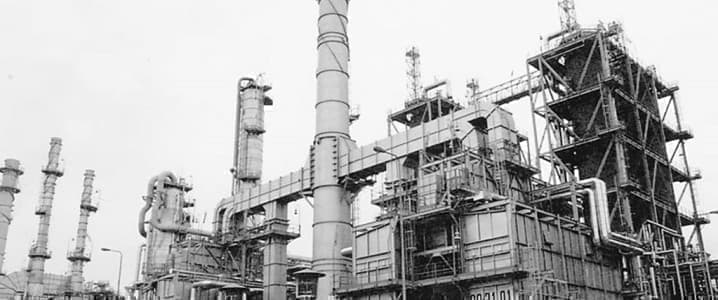The downstream industry has been drawing increasing attention lately, with forecasters essentially warning refiners to brace up for dropping fuel demand and a new focus on petrochemicals as the main source of revenues.
These warnings are not new, in fact. For several years, this has been the default expectation for the refining industry amid a doubling down from governments and activists on the energy transition. When the transition speeds up, the argument went, refiners will have little choice but to lean more heavily on petrochemicals as EVs kill gasoline demand and wind and solar displace gas as power generation fuel.
So far, however, reality has fallen short of expectations. As Vitol’s head of research recently put it, “The pace of the energy transition in oil and in transportation has fallen short of expectations, and at the same time, the lack of investment in the industry has not translated into a shortage of supply as expected.”
EV sales growth is slowing down, especially in the U.S., and wind and solar additions are also slowing down due to cost inflation and, in some places, weaker demand or local community opposition. Yet the warning forecasts persist.
The latest comes from Wood Mackenzie, which said that “As the energy transition progresses, refineries face an increasingly Darwinian battle for existence.” In its report, the consultancy said that flexibility and the integration of oil refining and petrochemicals production would be vital for the downstream industry in the future. Related: Oil Prices Extend Gains Further on OPEC+ Cut Predictions
The report emphasizes the importance of petrochemicals over the long term on the assumption that the transition will pick up the pace and demand for fuels will decline as a result. Indeed, this prediction is in tune with virtually all forecasts for the future of refining: as the transition to electricity shrinks demand for fuels, the industry would have to rely on petrochemicals to survive.
Unlike demand for fuels, these forecasts point out, demand for petrochemicals has pretty good chances of long-term survival thanks to the versatility of their applications across industries. That and biofuels would be the future of the refining industry.
Demand data, however, suggests that these forecasts are best taken with a pinch of salt. In July this year, for instance, Reuters noted that the Energy Information Administration had repeatedly forecast a decline in gasoline demand only to have to later revise that to demand growth.
The report also pointed out that predicting where demand for gasoline would go over any given period was really difficult to do because of the multiple factors interplaying to determine the direction of change.
As a general rule, however, when prices are lower, demand picks up, and when prices are higher, it weakens. The pandemic has left its mark on the fuels market, of course, with hybrid work that became by necessity popular during the lockdowns remaining a choice for many. That’s fuel demand that will likely not come back, motivating forecasts that gasoline demand, at least in the U.S., peaked in 2018.
Indeed, current gasoline demand in the world’s largest economy is markedly lower than the 9.33 million bpd average booked for 2018 but not that markedly to make refiners worry about their long-term prospects. In fact, statistical data suggests that demand for oil has largely recovered from the pandemic slump even if it never again returns to pre-pandemic levels.
According to Wood Mackenzie analysts, the greater emphasis on petrochemicals will reduce refiners’ exposure to punitive government measures against carbon emissions: petrochemicals are not combustible, the report noted, meaning their Scope 3 emissions were lower than those of fuels for internal combustion engines.
Yet both this and many other reports assume that the adoption of EVs would be a linear curve pointing upwards. This does not appear to be the case, except in China. Yet even in China, EV sales are slowing down, giving rise to doubts about the potential of electric cars to fully replace ICE vehicles at this point, even with generous government subsidies.
Of course, an argument could be made that this slowdown in EV sales is only delaying the inevitable for refiners and sooner or later, they would need to start planning for a future in which fuel sales would be a much smaller part of their business than petrochemicals.
On the other hand, several years ago, Bloomberg predicted that China’s new refining capacity was in surplus to demand and would become stranded assets because fuel demand was set to peak by 2025. Instead, China is currently a key fuel exporter, especially to Europe, where several refineries closed during the pandemic.
Indeed, that “surplus” refining capacity led Reuters to suggest in October that China would save the West from fuel shortages this winter thanks to its refining capacity. Essentially, while in Europe and the U.S. refineries were being shut down or converted into biofuel plants, China was building more of them. The situation right now suggests the latter was on the right track—while being the biggest EV market in the world, at that.
Predicting the long-term future of any industry is a difficult task. There are too many unknowns to be able to provide a reliable glimpse into a world decades from now. The task seems to be particularly difficult when it comes to the energy industry, however. These predictions tend to be based on assumptions considered virtually certain—until they never materialize. Perhaps the best course of action for refiners is to not rush into pre-empting the changing patterns in demand the transition may cause.
By Irina Slav for Oilprice.com
More Top Reads From Oilprice.com:
- Oil Prices Rise on Expectations of Deeper OPEC+ Cuts
- The UAE Could Raise Oil Production Regardless of OPEC+ Decision
- Global Refining Industry Braces for Tough 2024

















